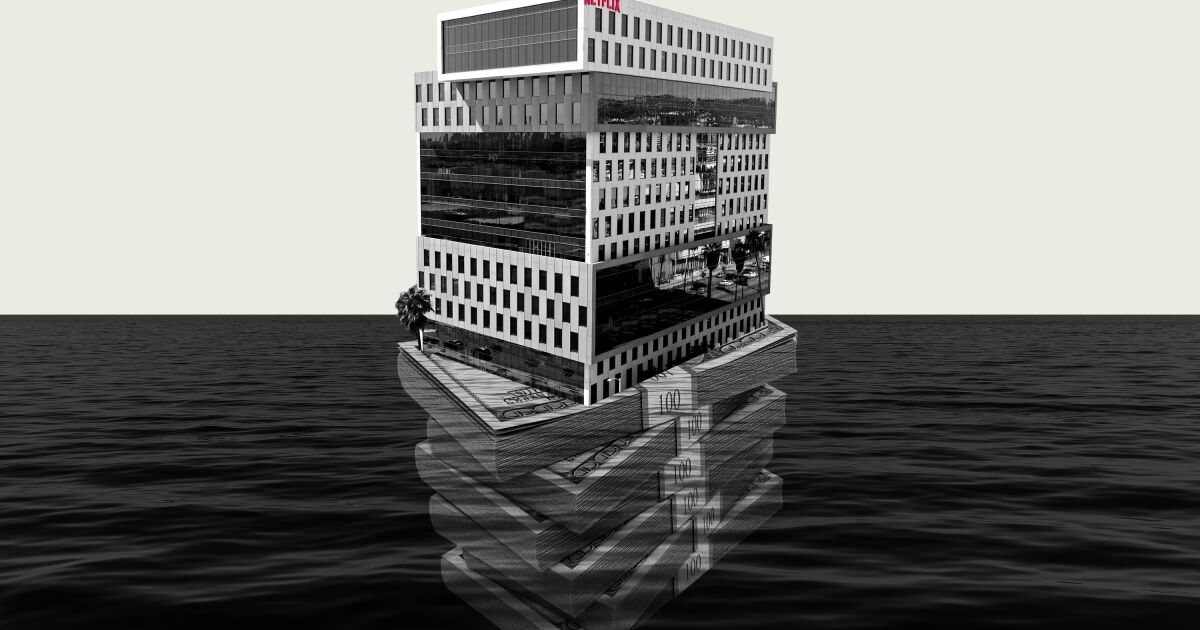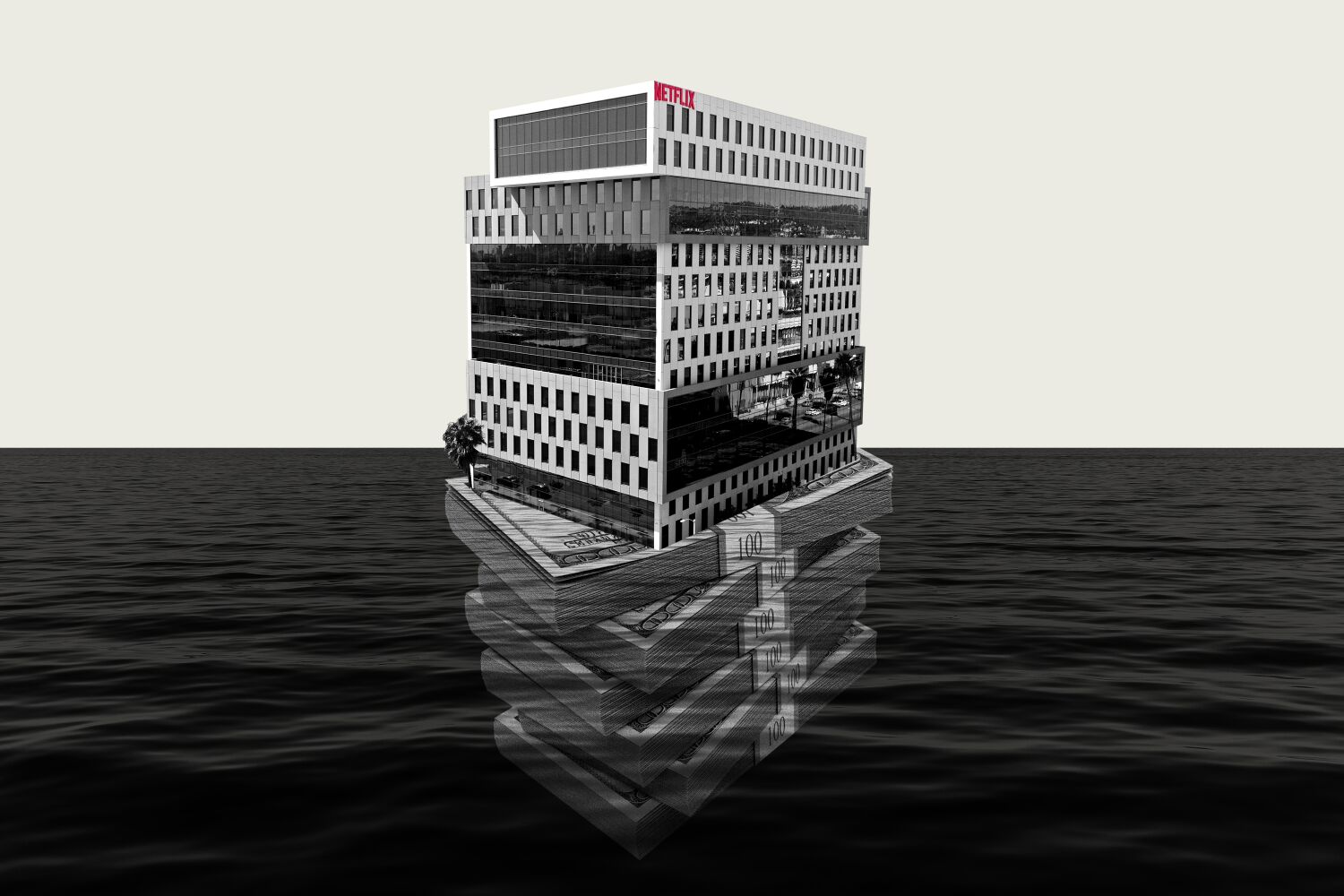

I used to resent the synecdochical use of the word town. As in, this town. As in, Hollywood. As in, Los Angeles, meaning, this is the part of Los Angeles that stands in well enough for the whole. I used to love citing the Bureau of Labor Statistics figure stating that the motion picture industry accounts for only 3% of the entire Los Angeles County workforce. I used to leave out a telling addendum, that this tiny sliver represents the largest concentration of industry labor (“industry” being the slightly more focused synecdoche for “motion picture industry”) in the United States. In my previous lives — aside from catching a glance of rushed PAs and wardrobe people whenever a film or TV set bloomed in my neighborhood, or on the periphery of my commute to a nonindustry job — I couldn’t tell you where, exactly, this town was located.
The industry, like the 3% of Angelenos who make it happen, is scattered across the topology of the city, a lace network of social and economic bonds. The Netflix building in Hollywood, the Directors Guild building further west on Sunset, the old CAA building in Beverly Hills (“old” being the operative word here, as the Los Angeles Conservancy-dubbed historical site now houses the corporate offices of — checks notes — Alo Yoga), the Writers Guild of America West building in the Fairfax district.
So much of what we call history is what happens when the abstract ideals of hard buildings meet the actual needs of soft bodies. That visual drama is more obvious and all too real now, as the smooth lines of Hollywood studio buildings are set against active rows of people marching to halt productions. From Netflix to Paramount to Sony, industry town structures share an affinity for bleached stone, unbroken slabs of marble and glass volumes set at unconventional angles. Call it corporate-askance: smooth reflective surfaces that project instructability and power, but with curvilinear façades and insistently interesting textures that keep a hand in the arts. They represent a fundamental paradox of the television and motion picture industry: the smooth, reflective surface of the American superego, set at an increasingly uncomfortable angle against the people who create it.
On May 2, the Writers Guild of America, failing to reach a deal with the Alliance of Motion Picture and Television Producers that would ensure ongoing living wages for writers, declared a strike. The synecdoche of their struggle stands in for the whole intractable precarity of any kind of writing life (less than a week into the strike I noticed a contingent of picketing poets, bearing signs like “Poets in solidarity with the WGA” and “Do not go gently into that bad contract”). I write for television, but I am not in the WGA. The writers rooms I’ve done have taken place on Zoom, in-house at smaller production studios, in private homes and, once, in a cabin in Lake Arrowhead — that showrunner having somehow convinced the studio to sequester us in the mountains in exchange for a shorter room. I didn’t know then how my experiences were already reflecting a massive shift in how certain people wanted to organize the labor of people who write. I also didn’t know that many of my writing jobs then were credited as “consulting” or, ingeniously, “devising,” in order to skirt certain requirements. I was happy to be making TV. I still am. This town is many places to me, not the least of them being a freezing lake at dawn.
I tried to articulate this hard-buildings-soft-bodies tension to another showrunner friend. We were picking out snacks for the carpool to the picket line at the Netflix building. I offered to drive, buoyed by the double task of solidarity and research, homemade signs in hand. I asked, perhaps rhetorically, what could possibly be said about the industry writ large by a group of buildings that look alike but nonetheless represent such disparate entities within. Maybe, he said, it’s important for the unions to have big shiny buildings that say, “Hey, we’re one of the big boys.” True.
Since the latter half of the 20th century, the surest shorthand for power was a giant glossy skyscraper. The DGA and old CAA buildings were completed in 1989 and 1988, respectively. What I love, and the WGA building does this too, is how they pay a flash of obeisance to this idea on the surface while undermining it in their geometry. They have the gloss of mere office buildings but they are not the kind of boxy, anonymous towers we associate with less glamorous industries.
Architectural historian Dell Upton wrote, “The flow of money makes buildings possible and desirable […] Raw, economic power is filtered through the beliefs of builders and users, giving the landscape a variety that would not exist were it a simple vector of monetary forces.” That sounds abstract, though Upton’s point is that buildings are anything but. What does it mean, then, to view buildings not just as a concretized form of money but concretized beliefs about money?
I’ll use a smaller, vernacular detail to illustrate. I, like many Angelenos, have lived in apartments so rapidly, so literally whitewashed, that hinges, electrical outlets and light switches have been painted over past the point of utility. It’s an architectural motif nicknamed “the landlord special,” and Upton would agree — the landlord special doesn’t say anything about how much money a landlord has, so much as where a landlord believes money should go.
In a 1988 L.A. Times article on the construction of the DGA building, project architect Deneys Purcell talked about the split-cylindrical shape of the building in both practical and symbolic terms, pointing out that roundness is conducive to office planning, but also associating it with a stack of film cans and the need for a bit of personality in the design. “The committee’s main stipulation was to have a distinctive building that would not be easily mistaken for a spec office structure that lacked identification.” The Los Angeles Conservancy declares that the old CAA building’s interior finishings “serve to reinforce CAA’s message of stability and grandeur without being overly ostentatious.” The kernel of this genteel copy contains a coded value statement about power, or at least the expression of it. (Never mind that CAA outgrew these headquarters nearly as soon as they were finished. Buildings are slow. Life is fast.) The glass-barrel volumes of the union buildings seem to inhabit, or at least acknowledge, this tension.
By contrast, Netflix’s ICON office tower coheres like a wobbly offset stack of skyscrapers on their sides (or, as someone pointed out to me, like a stack of VCRs, which is too cynically poetic to be intentional). As we picket, my friend points out that the Netflix building is more of a compound, as the streaming service owns the neighboring Midcentury Sunset Bronson Studios (at times formerly known as Old Warner Bros Studios., KTLA Studios and Tribune Studios) along with the low, neoclassical office building and a few random apartment buildings. The pastiche of its sprawl sets it apart from traditional studio compounds like the current Warner Bros. and Paramount lots, self-contained minicities more readily identifiable as places where this town exists.
Architecturally, a compound like that represents profits metastasizing faster than architecture can express. The fact that writers in this town cannot sustain a living wage among all this growth means that writers, more so than CEOs and executives, are intimately acquainted, more so than buildings, with the unsustainable beliefs about where money should go.
